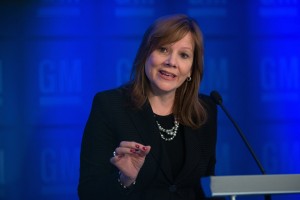
As GM CEO Mary Barra prepares to testify before a congressional committee, the maker is readying to deal with the victims of faulty ignition switch.
General Motors is preparing to settle the claims of anyone injured in an accident linked to a defective ignitions switch prior to the company’s 2009 bankruptcy as GM’s chief executive prepares to appear before another Congressional committee in Washington D.C. next week.
The settlements will be handled by Kenneth Feinberg, the New York attorney GM retained to handle the process, according to GM. While GM CEO Mary Barra said earlier this week that GM will compensate victims of the faulty ignition switch, Feinberg said last week that he will not have a final determination on the size of the settlement fund until next week.
While that was good news to some, others are still unhappy with the automaker, especially those currently involved in litigation. Sources suggest that if the plaintiffs resist the settlement offered by Feinberg, GM plans to use its 2009 bankruptcy, which ended any legal claims arising prior to under the “old” GM, to protect itself from the resulting lawsuits.
GM recognizes it has a “moral” obligation to do what it for those injured or killed by the defective switch, sources said. At the same time the automaker has a legal or fiduciary responsibility to use any and all legal arguments at its disposal to protect GM’s current shareholders, the sources noted during a background briefing.
The automaker acknowledges the defective switch contributed to the deaths of 13 motorists, but the company’s critics said this week they have collected information on as many as 120 deaths. National Highway Traffic Safety Administration officials have suggested the number is higher than 13 as well, but hasn’t made a final determination on a number. Feinberg will determine the final number of fatalities, GM officials said.
Using the protections afford it through the bankruptcy process may not be enough for the automaker, and GM also plans to defend itself in court should plaintiffs find a way around the bankruptcy protection. There are ample legal precedents to protect GM’s position. But that hasn’t stopped trial lawyers from making an effort to get around the relief from lawsuits and other claims offered under Chapter 11 of the U.S. Bankruptcy code.
Ever since the recalls began on Jan. 31, GM has been facing a mounting number of lawsuits from plaintiffs complaining the defective switch, which was used in a several small GM vehicles such as the Chevrolet Cobalt, Saturn Ion and Chevrolet HHR, caused accidents in which they were injured.
GM said it would set up a compensation fund to reimburse victims, which Feinberg, a respected New York well versed in handling compensation cases, will oversee.
(First drive of the Lincoln MKC. For more, Click Here.)
Earlier this week, Barra re-iterated that besides administering the fund, Feinberg is also responsible for setting up the procedures and protocols governing the amount compensation received by each claimant. GM hasn’t said how much it will set aside in Feinberg compensation fund, which is now expected to be ready by Aug. 1.
GM is already on tricky legal ground. It has settled some of the ignition-switch-defect cases, including some that nominally be excluded by the bankruptcy proceedings. However, plaintiffs have also filed new claims in the case involving a settlement in Georgia, asking to have the settlement set aside. In addition, they are also asking GM’s protection under the bankruptcy law be removed because of deliberate fraud by the automaker.
GM’s critics among the families of victims are now demanding the earlier settlements, which were sealed by court order, be unsealed and made public.
(Click Here for details about Toyota’s latest airbag recall problem.)
GM has denied it has taken part in any fraudulent activity or a cover-up.
Earlier this week, a federal panel ruled more than 80 lawsuits will be heard in New York where the GM bankruptcy case was heard. The ruling is considered favorable to GM since plaintiffs would have preferred to see the cases consolidated in California or even Texas, which are considered better venues for plaintiffs.
(To see more about Mary Barra’s promise of no more problems, Click Here.)
Barra said the independent counsel’s report blamed the defective switch crisis on a combination of incompetence, inaction and poor judgment on the part of the company’s engineers.
However, among the 15 employees dismissed were two of the company’s lawyers as well as section administrators responsible for recall safety, which plaintiffs are certain to suggest points to a tacit admission on GM’s part that the company had tried to cover up the switch-defect even as the evidence mounted the defect could contributed to the deadly accidents.
